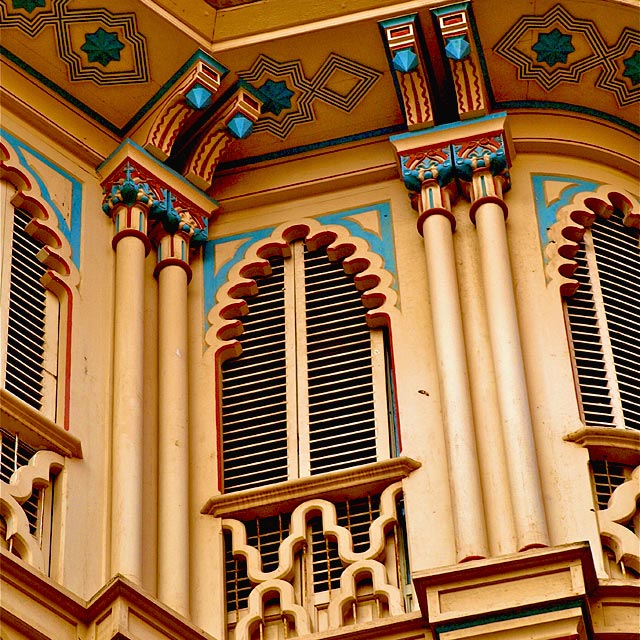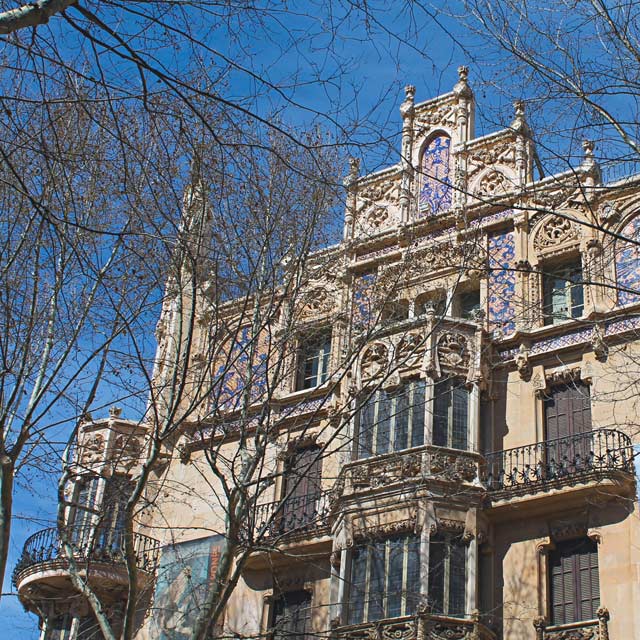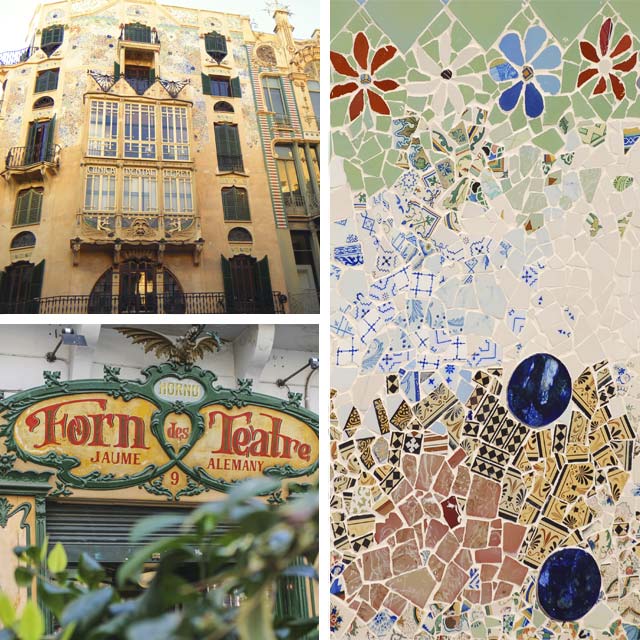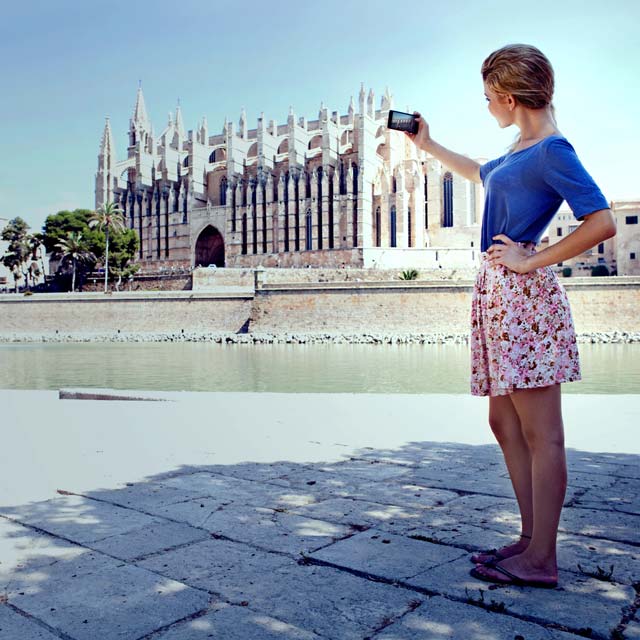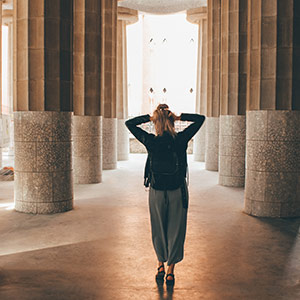You can walk the route we suggest here in 2 to 3 hours.
Parlament-Antiguo Círculo Mallorquín
The route starts at the Parlament of the Balearic Islands, the former Círculo Mallorquín. Art Nouveau motifs can be seen in the windows, columns and capitals. Very close by we find Can Corbella, an unusual block of flats in a Neo-Mudéjar style. The wooden columns superimposed on the façade, with horseshoe arches and stained glass on the ground floor, are some of the most outstanding elements.
Edificio Paraire
We continue on to Edificio Paraire, notable for its vertical feel, geometric decoration and the combination of glass, stone and wrought iron on the balconies. By the same moderniste architect, the next stop is Can Roca, with balconies featuring colourful ceramic decoration.
